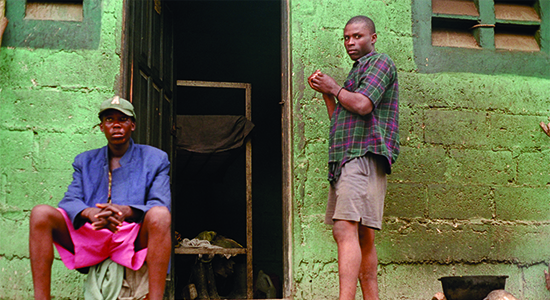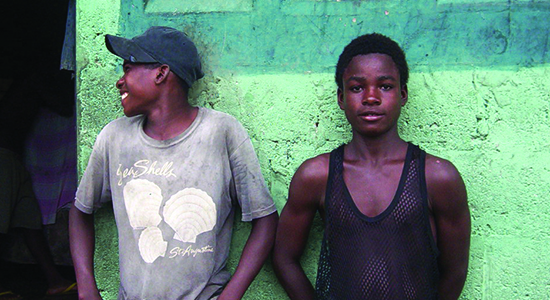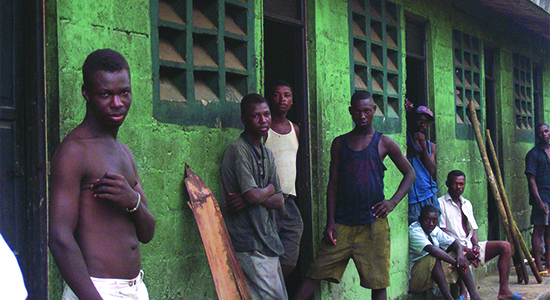
Telling Bittersweet Stories: Reflections on my time with the Dominican Republic’s Haitian cane workers
By Elizabeth Abbott
In 2004, on my first day of retirement after 13 years as Trinity College’s Dean of Women, I marked Canada Day with Haitian sugar cane cutters and their families on a batey, or sugar plantation, in the Dominican Republic. I had come to shadow and interview them as part of my research for Sugar: A Bittersweet History (Penguin, 2008), and to tell their unique stories.
The batey (pronounced: bah-tay) is a microcosm of the historic sugar cane world, with anachronistic flashes: The cane cutters are almost all men, and they ban their women and children from the hated cane fields. Most wives are homemakers. A few are domestics in Dominican homes. Children attend school when it operates, and girls help their mothers at home. Many boys strive to escape the batey through baseball, and the competition to excel is ferocious as they strive to be the next Sammy Sosa—once a batey boy like them.
The demography of the batey is reflected in its physical plant: shacks built along cement pads for the long-termers, Dominicanized Haitians who have learned Spanish and hispanicized their names. Some of these homes boast basic electrical wiring and old-style black-and white televisions. Stinking outhouses serve as communal toilets. There is no running water.
Down the hillside are the “Congos,” Creole-speaking men newly arrived from Haiti who will return there at the end of the cutting season. Their bleak, unelectrified concrete barracks of two back-to-back rows of nine windowless cells are crammed with triple-level bunk beds, most without foam pads or even sheets. These men cook in battered pots over charcoal fires and use nearby fields as latrines. At night, they are padlocked inside to prevent escape attempts.
Cane work is so universally despised that almost no Dominican will do it. It is gruelling, dawn-to-dusk manual labour in blistering hot fields for 55 pesos (US $1.20) per tonne cut. Occupational hazards include machete wounds, snake bites, sunstroke, cane-weighing cheating, and meagre pay slips. Haitians do it, however, because as Edwin Paraison, Haiti’s Consul General to the Dominican Republic explained to me at his office in Santo Domingo, “sugar is like a passport out of Haiti.”

I spent a day each with two batey families, sharing a meal (whose ingredients I paid for) with each. My first hosts were at the top of the social scale. I never met the husband, whose importance on the batey his wife proudly referenced without specifying his function or occupation. Their cement bungalow had two bedrooms and a parlour, stuffed with furniture and decorated with china figurines.
Female friends and neighbours wandered in during my visit, among them a schoolgirl who vigorously swept the floor, then crouched down on a woven straw stool while my hostess braided her hair. “She comes here every day,” my hostess volunteered.
“Because of your son?” I inquired. Her teenager had not yet appeared but she had spoken to me about his partying ways. She smiled, shrugged and that was answer enough.
My hostess cooked our lunch outside in a coal pot precariously perched on a rock over an open fire, because the propane stove in the indoor kitchen was broken. On that batey, only she, a shopkeeper and the Vodoun houngan, or priest, had indoor kitchens. Everyone else made do with coal pots set over open fires outdoors.
The second house I visited was typical of most others. It consisted of a dank cement room furnished with a bed, table and two rickety chairs. My hostess, a mother of three, poured out her story.
After an accident that killed her two eldest children’s father, who was the son of the houngan, the houngan came and reclaimed his son’s motorbike, which she had hoped to sell. Distraught and penniless, she had paid sex with a cane cutter, and conceived her third baby.
Her eavesdropping neighbours were unsympathetic. “You didn’t need to do that,” one scolded. “Now you’re really miserable.”
My hostess served my meal of pasta, kidney beans and an unidentifiable green vegetable, and watched me as I ate. She had only one plate, she explained. She would eat after I had finished.
I was more interested in the sources and cost of food than in eating it. Because most batey dwellers are undocumented— that is, illegal—they dare not venture into the outer world to buy cheaper goods. The batey’s little shops charge high prices for staples—rice, canned beans, pasta, salt, tomato paste and chicken-stock cubes, cooking oil and lard—and offer a tiny selection of flabby vegetables. Why, I wondered, did the women not grow their own food? The answer, verified by later research, was that gardens are prohibited and, if discovered, dug up and their owner penalized.

The medical clinic provided more evidence of the batey’s Kafka-esque nature. It was clean-swept and literally bare, and its Dominican doctor told me that she had run out of medications and supplies weeks earlier. Unpaid herself, she simply wrote prescriptions for drugs carried only by pharmacies outside the batey, which her patients were banned from visiting.
My visit to the houngan was another eye-opener. His bungalow was the batey’s finest, and his garage housed his car, his dead son’s motorbike, and stacks of Dominican newspapers. When I mentioned that I had just met his grandchildren, he angrily denied that his son was their father or that their mother had a right to the motorbike. So much for my faint hope of persuading him to help the forgotten little family.
As I continued to chat and explore the batey people’s lives, I came to understand the batey’s power dynamics. Despite being miserably underpaid, malnourished and in poor health (diabetes is rampant), the cane workers’ undocumented status, as well as the batey’s prison-like infrastructure, keeps most of them from joining the tens of thousands of Haitians who work in construction, manufacturing and other Dominican industries. All of them are treated as contemptible foreigners without rights or recourse to authority. Even their Spanish-speaking children, Dominican born but ineligible for Dominican birth certificates, live under constant threat of deportation to Haiti.
The sugar workers dread the dead season, when Dominican authorities routinely raid bateys and deport some of those who do not manage to flee in time. They do not forget that in 1937, Dominicans slaughtered about 30,000 Haitians at the Massacre River, a tragedy memorialized in Edwidge Danticat’s novel, The Farming of Bones.
Years after my visit to their batey, anti-Haitian hatred has intensified so virulently that in 2013, a Constitutional Court ruling denied citizenship to anyone born after 1929 to at least one Dominican parent. Suddenly, hundreds of thousands of panicked Haitian-Dominicans were at risk of deportation.
International outrage spurred the Dominican government to offer them a limited time period to apply for citizenship—conditional on nearly impossible-to-obtain documentation— and out of tens of thousands of applicants, a mere 8,755 registered successfully. A parallel scheme, promising residency and work permits, attracted 288,466 mostly Haitian undocumented workers, but granted only a few hundred permits.
The mass deportations began in August 2015. Official Dominican documents report 15,754 Haitians deported. Another 113,320, including 23,286 children, avoided a repeat of the 1937 massacre by “voluntarily” leaving their homes for a hopeless future in Haiti. I do not know the fate of those I met on the bateys. But they asked me to tell their stories, and that at least I can do.
Elizabeth Abbott is an historian and author of Sugar: A Bittersweet History; Haiti: A Shattered Nation and most recently, Dogs and Underdogs: Finding Happiness at Both Ends of the Leash. She was Trinity’s Dean of Women (1991-2004), is a Trinity Senior Research Associate, and contested the Oct. 19, 2015 federal election as candidate for the Animal Alliance/Environment Voters’ Party in Toronto-Danforth.

Sorry, comments are closed for this post.